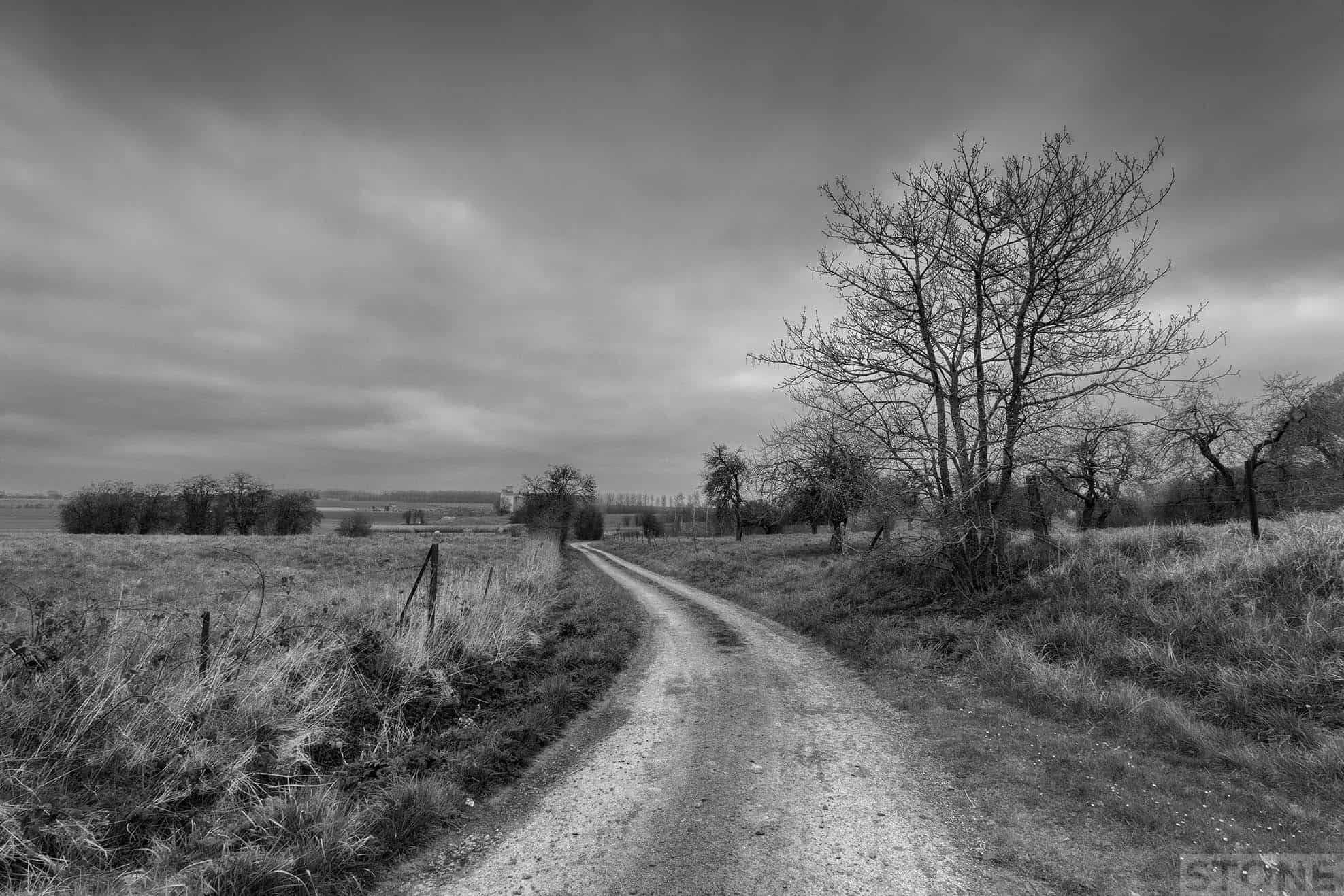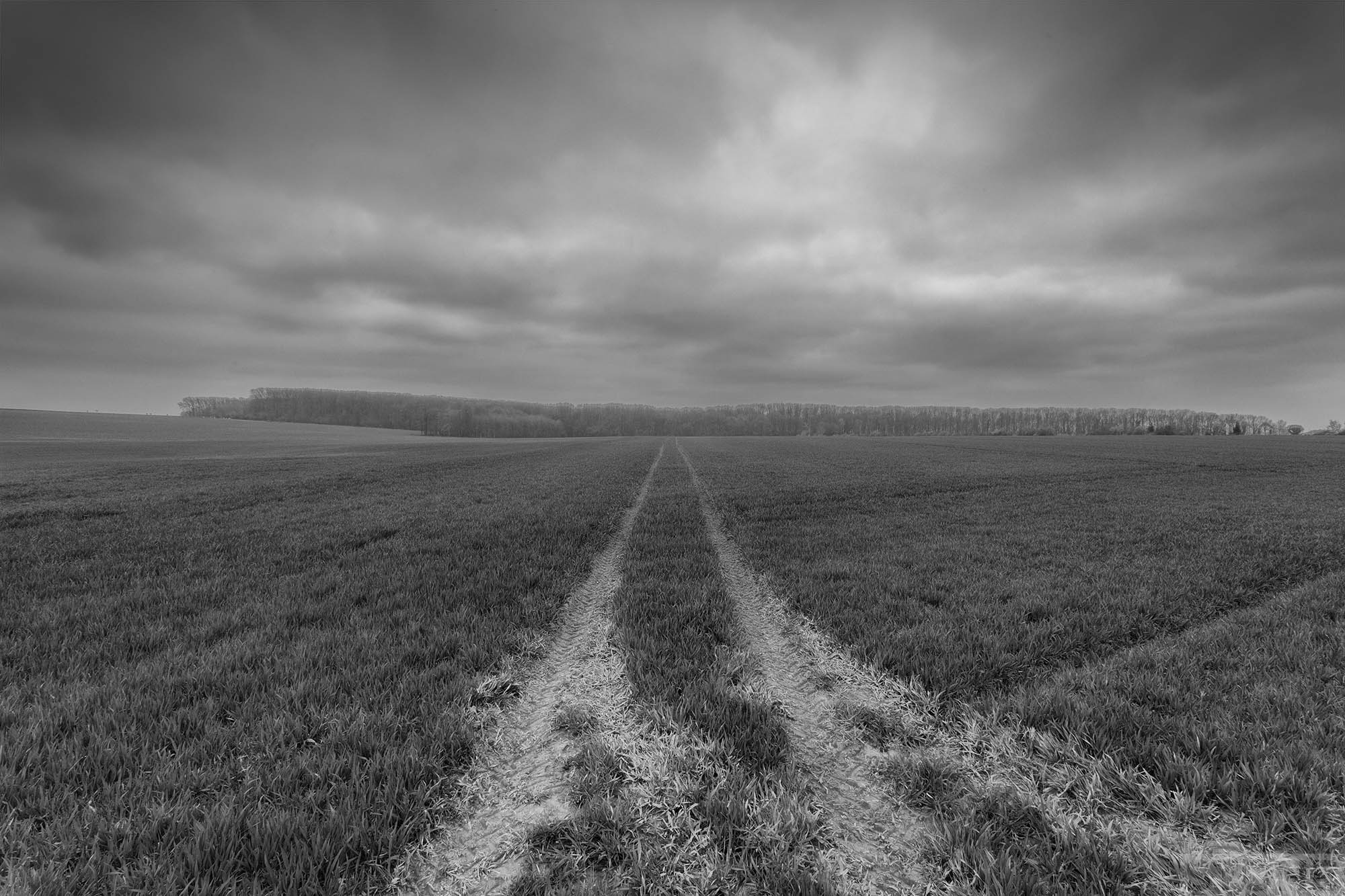It suddenly struck me yesterday, what I’m trying to finish the unfinishable. The Great War may have ended in 1918, but it didn’t, and so it goes, new layers of images, understanding and history being laid down with every word typed and shutter click. I’d set various target areas to go and shoot and walk and achieved virtually none of them. I get distracted by the little metal signs and the sudden reveal of the regiments of white and brick rising out of valleys and on ridges at every corner. This isn’t a catalogue of everything it’s just what I alight on really. The Somme region, Picardie in particular is thick with our influence, the French may dwell here, but the British, Australians, New Zealanders and Canadians are with them always. Every turn reveals us, small old memorials stand on corners, obelisks and beacons to those who passed here dot the landscape. The words courage and bravery are etched into the landscape of fear; one cannot exist without the other in us.
What started out as a visit to Bernafay And Trones Wood ended up being a long slow look at Guillemont, parked up outside the muddled ranks in white at Guillemont Cemetery, then a walk with Jünger finishing at Waterlot Farm. The weather started fine, the sun was up, mist huddling against the low slopes of the valleys, like dregs of milk in a glass cup. A haze up under the early warming sun across the rise in the land towards Mametz and Contalmaison. Parked up on the hard standing and the shingle pools you can easily get lost staring into the past, naming the darkened blocks of woodland and the compass point spires of the villages.
I drove down here through piles of carbon to get to this calcium place, the industrial coal heaps in the North litter the plains around Lens and Arras before giving way to the slight rise of these chalk downs which feel so much like part of Southern England. Our language is here too. The nicknames, a codex for the unpronounceable – French the English speakers took and changed dot the place like memorials in their own right. Lochnagar, Mucky Farm, The Glory Hole, Crucifix Corner, Regina trench, The Quadrilateral. The cemeteries carry a memory too, both of the places they became for four years and the men who named them and those that lie in the burial grounds that mark them still. Caterpillar Cemetery after a trench, Norfolk, Dartmoor and Devonshire after the badges on the uniforms of those who were interred early or the regiments that first dug them. As the war lumbered on they filled with more and more from the near static armies jerking drift across the landscape. Rows of names of men, and rows of names with none, and nearly always a few ‘believed to be buried here’ – for those whose spot was lost as the war rolled backwards and forwards across the land – the shells falling turning the earth they lay in again and again. The post war clearances added to the numbers building these sleeping cities lost in the fields of Picardy.
The walk around Jünger’s Lane was possibly one of the most revealing I’ve ever taken. Ernst Junger wrote enthusiastically of war, a sport for boys. This is basically some of his ground, the dirt tracks, sustained by layers of brick and chalk powdering by tyres into the chalky cloying mud. Fields slope away slick with the green of the spring wheat and maize searching for light. Some fields are freshly turned, it doesn’t take much effort to see the plough revealing our past. The area was being farmed as I walk, a beetle-like tractor moving last seasons bales ahead of me up and down the lane, the distant chug of an agro-diesel, the sucking sound of huge tyres fighting the slew of mud.
On the horizon in front of Trones Wood I can see men picking their way across the freshly turned clods, bent double studying the surface, arms occasionally extending; a shrapnel ball, a button, spent cartridges, clasps and bullets in the pale soil, signs of past life and huge movements of men and the machine of warfare. The land here is littered with shrapnel, it stands out more than in the Salient in Flanders to the North, the chemistry of the land, less clay, the paler soils. The iron reveals itself as orange and red stains against the pale canvas. Like heavy stones these big ugly lumps of rust and brass once fell in a slew as sharp fragments, now they litter the surface like a memory. The men are walking the field where Noel Chavasse won his VC, he busied himself rescuing and treating countless men under heavy fire. Saved twenty badly injured and numerous others trapped in the hollows between the lines despite having been hit in the side by a shard of shell. These are fields where Asquith’s son Raymond breathed his last along with countless bootmakers, clerks and labourers, it pays to not think to much in a place where it’s difficult not to.
You have to pick your way through puddles at this time of year, seas of pale mud. It has rained recently. The chalk drains fast, but there are lakes of this viscous brown stuff, the stuff of legend at the end of the summer 1916, The Somme Mud. It sticks to boots, building up like dustbin lids, dries and chalks your clothes and car like ash. There is a lake at a corner where two tracks meet, heavily rutted and cut about by tractor tyres. I’m not quite method actor enough to brave it and climb onto the field boundary. The view is fine from here. The hard fought advance came straight up towards me across where the fluff of the wheat is pushing through. The Woods behind it grown back from the mud stumps and twisted sticks of 1916. The original name; Bois de Troncs once misread on maps has grown back too. Behind me Guillemont lies, A church at the crossroads, a row of normal modern houses at the end of the field, straggling out from the little farming community to where the French cross the name out as you leave the village, denying the extension of place turning back to fields. The surface is littered with rusted orange shrapnel, the grey white dome of a shrapnel ball, then another and again and again, poking through the drying clods and plough-shattered flint nestling in the drying chalky loam like baby mushrooms. I have a pocket full of heavy lead marbles all from the margin of the field within 5 minutes. Then a bullet, a shirt button and a strap end, another ball this one distorted by hitting something. And finally something white and smooth and strange.
I’ve been to the front countless times, walked margins like this over and over, I’ve only seen bone once or twice before, heard other people describe seeing it. Something in you switches over, hairs rise on my arms, the ultimate code in the landscape of recognition, a trigger, this was a man, His past lost from either empire, he could be from almost anywhere and here is all that remains; a square of white. One hundred years on all that is visible left resting in the palm of my hand.
As with anywhere, you encounter the detritus of life all the time. The layer of the modern being deposited, the anthropocene archaeology of the future; Broken rusted plates and bent bits of agriculture, the discarded nothing of modern life; corroded drink cans, plastic bottles and carrier bags in bushes or trodden into the earth, the human is everywhere. But not like this. I turn it in my hand, slip it in my pocket away from the metal stuff, the walk is over. I’m going back to the cemetery on the road.
Earlier, back at Guillemont in the memorial arches I spotted a bag, crispy cellophane; the same stuff we used to keep old photos in, it is a quarter full of this, these parts of men. A piece of humerus, a rib, some vertebrae, dusty with chalk and soil like the content of a disturbed tomb. That’s what this landscape is; a rolling grave to thousands. This inch square fragment of calcium, what remains of a man, where his thoughts lived will not be alone.



